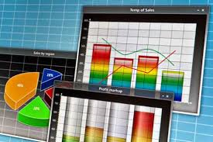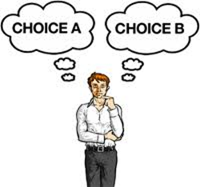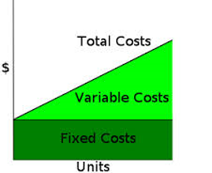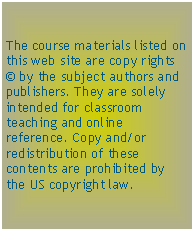|
Professor Anvari Taught manufacturing and industrial systems engineering courses at the University of Michigan for five years where he received his three engineering degrees, and as an adjunct professor he teaches project and cost management at local universities in the Washington DC area.� In his early career he worked at General Motors as a production engineer and later as an operations research and systems analyst at the cost and economic analysis center in Washington DC. Mort is currently the Director of Programs and Strategy at ASA (FM&C) and the Lean Six Sigma (LSS) deployment Director where he oversees process improvement initiatives, economic studies validation, cost benefit analysis, and risk and uncertainty analysis in support of major defense programs. Mort is Defense Acquisition University Level III Certified in Business Financial Management (BFM), and Business Cost Estimating (BCE). Mort has� received several professional awards that includes the 2006 DoD modeling and simulation award. In his public lectures, Mort stimulates cost culture debates among government and industry leaders and managers. Professor Anvari has repeatedly appeared on live television programs analyzing the political economy of the Middle East. |










|
Cost
In production, research, retail, and accounting, a cost is the value of money that has been used up to produce something, and hence is not available for use anymore.� In business, the cost may be one of acquisition, in which case the amount of money expended to acquire it is counted as cost.� In this case, money is the input that is gone in order to acquire the thing.� This acquisition cost may be the sum of the cost of production as incurred by the original producer, and further costs of transaction as incurred by the acquirer over and above the price paid to the producer. Usually, the price also includes a mark-up for profit over the cost of production.
More generalized in the field of economics, cost is a metric that is totaling up as a result of a process or as a differential for the result of a decision.� Hence cost is the metric used in the standard modeling paradigm applied to economic processes.� Costs are often further described based on their timing or their applicability.
When developing a business plan for a new or existing company, product, or project, planners typically make Cost Estimates in order to assess whether revenues/benefits will cover costs (see cost-benefit analysis).� This is done in both business and government.� Costs are often underestimated, resulting in cost overrun during execution.� Cost-plus pricing, is where the price equals cost plus a percentage of overhead or profit margin.
In accounting, costs are the monetary value of expenditures for supplies, services, labor, products, equipment and other items purchased for use by a business or other accounting entity. It is the amount denoted on invoices as the price and recorded in bookkeeping records as an expense or asset cost basis.
Opportunity Cost, also referred to as economic cost is the value of the best alternative that was not chosen in order to pursue the current endeavor�i.e., what could have been accomplished with the resources expended in the undertaking. It represents opportunities forgone.� In theoretical economics, cost used without qualification often means opportunity cost.
Classification of costs:� Classification of cost means, the grouping of costs according to their common characteristics. The important ways of classification of costs are:
� By Element: There are three elements of costing i.e. material, labor and expenses. � By Nature or Traceability: Direct Costs and Indirect Costs. Direct Costs are Directly attributable/traceable to Cost Object. Direct costs are assigned to Cost Object. Indirect Costs are not directly attributable (traceable) to Cost Object. Indirect costs are allocated or apportioned to cost objects. � By Functions: production, administration, selling and distribution, R&D. � By Behavior: fixed, variable, semi-variable. Costs are classified according to their behavior in relation to change in relation to production volume within given period of time. Fixed Costs remain fixed irrespective of changes in the production volume in given period of time. Variable costs change according to volume of production. Semi-variable Costs are partly fixed and partly variable. � By control ability: controllable, uncontrollable costs. Controllable costs are those which can be controlled or influenced by a conscious management action. Uncontrollable costs cannot be controlled or influenced by a conscious management action. � By normality: normal costs and abnormal costs. Normal costs arise during routine day-to-day business operations. Abnormal costs arise because of any abnormal activity or event not part of routine business operations. E.g. costs arising of floods, riots, accidents etc. � By Time: Historical Costs and Predetermined costs. Historical costs re costs incurred in the past. Predetermined costs are computed in advance on basis of factors affecting cost elements. Example: Standard Costs. � By Decision making Costs: These costs are used for managerial decision making. Marginal Costs: Marginal cost is the change in the aggregate costs due to change in the volume of output by one unit. Differential Costs: This cost is the difference in total cost that will arise from the selection of one alternative to the other. Opportunity Costs: It is the value of benefit sacrificed in favor of an alternative course of action. Relevant Cost: The relevant cost is a cost which is relevant in various decisions of management. Replacement Cost: This cost is the cost at which existing items of material or fixed assets can be replaced. Thus this is the cost of replacing existing assets at present or at a future date. Shutdown Cost: These costs are the costs which are incurred if the operations are shut down and they will disappear if the operations are continued. Capacity Cost: These costs are normally fixed costs. The cost incurred by a company for providing production, administration and selling and distribution capabilities in order to perform various functions. Other Costs: Marginal costing (Cost-Volume-Profit Analysis and Marginal cost)� The cost-volume-profit analysis is the systematic examination of the relationship between selling prices, sales, production volumes, costs, expenses and profits. This analysis provides very useful information for decision-making in the management of a company. For example, the analysis can be used in establishing sales prices, in the product mix selection to sell, in the decision to choose marketing strategies, and in the analysis of the impact on profits by changes in costs. In the current environment of business, a business administration must act and take decisions in a fast and accurate manner. As a result, the importance of cost-volume-profit is still increasing as time passes.
|










|
Mort Anvari |

|
Professor Anvari Taught manufacturing and industrial systems engineering courses at the University of Michigan for five years where he received his three engineering degrees, and as an adjunct professor he teaches project and cost management at local universities in the Washington DC area.� In his early career he worked at General Motors as a production engineer and later as an operations research and systems analyst at the cost and economic analysis center in Washington DC. Mort is currently the Director of Programs and Strategy at ASA (FM&C) and the Lean Six Sigma (LSS) deployment Director where he oversees process improvement initiatives, economic studies validation, cost benefit analysis, and risk and uncertainty analysis in support of major defense programs. Mort is Defense Acquisition University Level III Certified in Business Financial Management (BFM), and Business Cost Estimating (BCE). Mort has� received several professional awards that includes the 2006 DoD modeling and simulation award. In his public lectures, Mort stimulates cost culture debates among government and industry leaders and managers. Professor Anvari has repeatedly appeared on live television programs analyzing the political economy of the Middle East. |


|
|
Cost Analysis Topics� (scroll down for Topics contents) |
|
|
|
1 |
Cost Benefit Analysis (CBA) 4 Days Training |
|
|
|
2 |
Cost Management |
|
|
|
2.1 |
COST MANAGEMENT BASICS |
|
|
|
3 |
Cost Management 4 Days Training |
|
|
|
4 |
Cost Management Certificate Course (CMCC) |
|
|
|
5 |
Cost Benefit Analysis Concepts and Practice |
|
|
|
6 |
Cost Risk Analysis |
|
|
|
7 |
Labor Rates |
|
|
|
8 |
Software Cost Estimating |
|
|
|
9 |
|
|
|
|
10 |
Costing Related Topics |
|
|
|
11 |
Cost Analysis and Estimating |
|
|
|
12 |
Applied Welfare Econ & Cost Benefit Analysis |
|
|
|
13 |
Cost Management 101 |
|
|
|
14 |
Health Care Cost |
|
|
|
A |
|
|
|
|
A |
|
|
|
|
A |
|
|
|
|
T |
|
|
|
|
T |
|
|
|
|
|
|
|
|
|
|
|
|
|
|
|
|
|
|
|
1 |
Cost Benefit Analysis (CBA) 4 Days Training |
|
|
|
1 |
|
|
|
|
2 |
|
|
|
|
3 |
|
|
|
|
4 |
|
|
|
|
5 |
|
|
|
|
6 |
|
|
|
|
7 |
|
|
|
|
8 |
|
|
|
|
9 |
|
|
|
|
10 |
|
|
|
|
11 |
|
|
|
|
12 |
|
|
|
|
13 |
|
|
|
|
14 |
|
|
|
|
15 |
|
|
|
|
2 |
Cost Management |
|
|
|
1 |
|
|
|
|
2 |
|
|
|
|
3 |
|
|
|
|
4 |
|
|
|
|
5 |
2.1 |
COST MANAGEMENT BASICS |
|
|
6 |
1 |
||
|
7 |
2 |
||
|
8 |
3 |
||
|
9 |
4 |
||
|
10 |
5 |
||
|
11 |
3 |
Cost Management� 4 Days Training |
|
|
12 |
1 |
||
|
13 |
2 |
||
|
14 |
3 |
||
|
15 |
4 |
||
|
16 |
4 |
Cost Management Certificate Course (CMCC) |
|
|
17 |
1 |
||
|
18 |
2 |
||
|
19 |
3 |
||
|
20 |
5 |
Cost Benefit Analysis Concepts and Practice |
|
|
21 |
1 |
||
|
6 |
Cost Risk Analysis |
2 |
|
|
1 |
3 |
||
|
2 |
4 |
||
|
3 |
5 |
||
|
4 |
6 |
||
|
5 |
7 |
||
|
6 |
8 |
||
|
7 |
9 |
||
|
8 |
10 |
||
|
9 |
11 |
||
|
7 |
Labor Rates |
12 |
|
|
0 |
13 |
||
|
1 |
14 |
||
|
2 |
15 |
||
|
3 |
16 |
||
|
4 |
17 |
||
|
8 |
Software Cost Estimating |
18 |
|
|
0 |
19 |
||
|
1 |
20 |
||
|
2 |
9 |
Cost Benefit Analysis docs |
|
|
3 |
1 |
||
|
4 |
2 |
||
|
10 |
Costing Related Topics |
3 |
|
|
1 |
4 |
||
|
2 |
5 |
||
|
3 |
6 |
||
|
4 |
7 |
||
|
5 |
8 |
||
|
6 |
9 |
||
|
7 |
10 |
||
|
8 |
11 |
||
|
9 |
12 |
||
|
10 |
13 |
||
|
11 |
14 |
||
|
12 |
15 |
||
|
13 |
16 |
||
|
14 |
17 |
||
|
11 |
Cost Analysis and Estimating |
18 |
|
|
1 |
19 |
||
|
2 |
12 |
Applied Welfare Econ & Cost Benefit Analysis |
|
|
3 |
1 |
||
|
4 |
2 |
||
|
5 |
3 |
||
|
6 |
4 |
||
|
7 |
5 |
||
|
8 |
6 |
||
|
9 |
7 |
||
|
10 |
8 |
||
|
11 |
9 |
||
|
13 |
Cost Management 101 |
10 |
|
|
1 |
11 |
||
|
2 |
12 |
||
|
3 |
13 |
||
|
4 |
14 |
||
|
2 |
15 |
||
|
14 |
Health Care Cost |
16 |
|
|
1 |
17 |
||
|
2 |
18 |
||
|
3 |
19 |
||
|
4 |
|
||
|
5 |
|
||
|
6 |
|